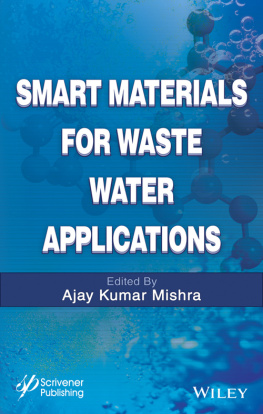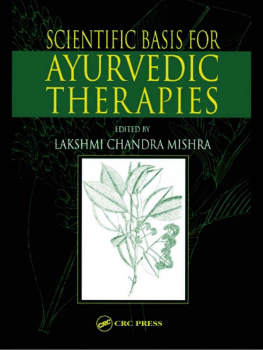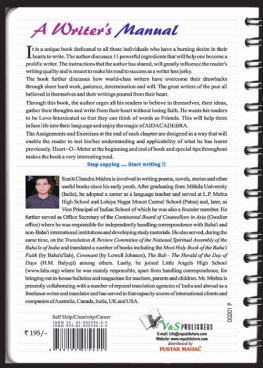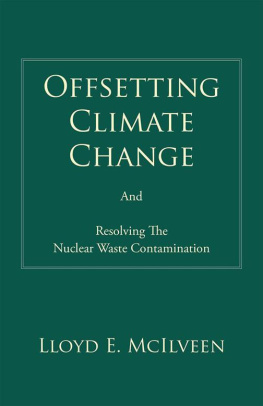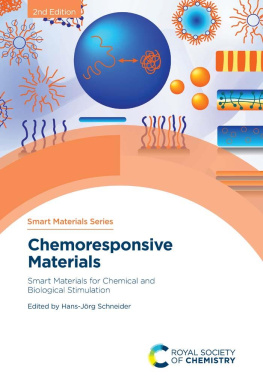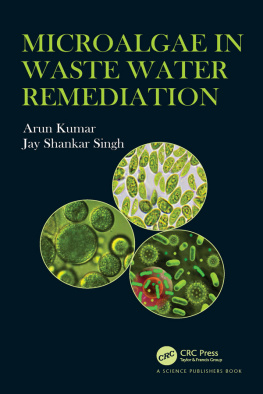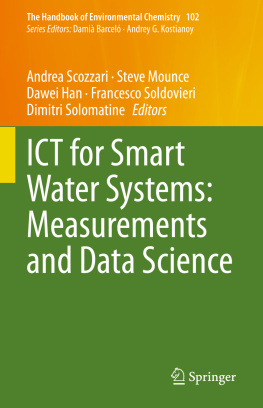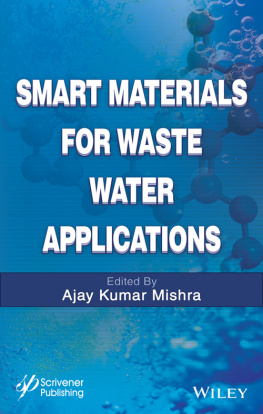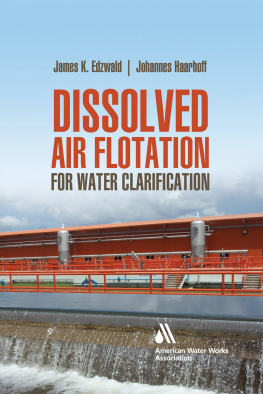Smart Materials for Waste Water Applications
Scrivener Publishing
100 Cummings Center, Suite 541J
Beverly, MA 01915-6106
Publishers at Scrivener
Martin Scrivener()
Phillip Carmical ()
Copyright 2016 by Scrivener Publishing LLC. All rights reserved.
Co-published by John Wiley & Sons, Inc. Hoboken, New Jersey, and Scrivener Publishing LLC, Salem, Massachusetts.
Published simultaneously in Canada.
No part of this publication may be reproduced, stored in a retrieval system, or transmitted in any form or by any means, electronic, mechanical, photocopying, recording, scanning, or otherwise, except as permitted under Section 107 or 108 of the 1976 United States Copyright Act, without either the prior written permission of the Publisher, or authorization through payment of the appropriate per-copy fee to the Copyright Clearance Center, Inc., 222 Rosewood Drive, Danvers, MA 01923, (978) 750-8400, fax (978) 750-4470, or on the web at www.copyright.com . Requests to the Publisher for permission should be addressed to the Permissions Department, John Wiley & Sons, Inc., 111 River Street, Hoboken, NJ 07030, (201) 748-6011, fax (201) 748-6008, or online at http://www.wiley.com/go/permission .
Limit of Liability/Disclaimer of Warranty: While the publisher and author have used their best efforts in preparing this book, they make no representations or warranties with respect to the accuracy or completeness of the contents of this book and specifically disclaim any implied warranties of merchantability or fitness for a particular purpose. No warranty may be created or extended by sales representatives or written sales materials. The advice and strategies contained herein may not be suitable for your situation. You should consult with a professional where appropriate. Neither the publisher nor author shall be liable for any loss of profit or any other commercial damages, including but not limited to special, incidental, consequential, or other damages.
For general information on our other products and services or for technical support, please contact our Customer Care Department within the United States at (800) 762-2974, outside the United States at (317) 572-3993 or fax (317) 572-4002.
Wiley also publishes its books in a variety of electronic formats. Some content that appears in print may not be available in electronic formats. For more information about Wiley products, visit our web site at www.wiley.com .
For more information about Scrivener products please visit www.scrivenerpublishing.com .
Library of Congress Cataloging-in-Publication Data:
ISBN 978-1-119-04118-4
Preface
Smart materials have been a thrust area to the researchers in the development of new materials that lead to create new tools and techniques, which will help in the development of advance technology. At the nano size, smart materials often take on unique and sometimes unexpected properties. This means that at the nanoscale, materials can be tuned to build faster, lighter, stronger and more efficient devices and systems. Smart materials have been extensively used in a variety of applications due to the change in the characteristics of the materials with small variation on stimuli. They are also known as responsive materials. Smart materials change their properties abruptly in response to small changes in the environmental conditions such as pH, temperature, electric and magnetic fields. Due to the versatility of such characteristics, these materials are highly applicable in the area of materials science, engineering, sensors and environmental applications. Besides, such materials are applied to develop newer composites, ceramics, chiral materials, liquid crystals, conducting polymers, hydrogels, nanocomposites and biomaterials. These smart materials are highly suitable for environmental remediation.
Water used for drinking and household needs must have good taste and no odour and be harmless to human health as well as the livestock. Clean water is always a need, which often calls for a cheap and efficient water purification system. There are several technologies and have been utilized for the water treatment process. Smart materials have been used to develop more cost-effective and high-performance water treatment systems as well as instant and continuous ways to monitor water quality. Smart materials in water research have been extensively utilized for the treatment, remediation and pollution prevention. Smart materials can maintain the long-term water quality, availability and viability of water resource. Thus, water via smart materials can be reused, recycled and desalinized, and it can detect the biological and chemical contamination as well as whether the source is from municipal, industrial or man-made waste.
The present book describes the smart materials for waste water application and it will be highly beneficial to the researchers working in the area of materials science, engineering, environmental science, water research and waste water applications. Chapters included in the book have been differentiated in three sections: first section includes the various carbon nanomaterials with a focus on use of carbon at nanoscale applied for waste water research. Second section involves synthetic nanomaterials for pollutants removal. The third section includes biopolymeric nanomaterials where the authors have used the natural polymers matrices in a composite and nanocomposite material for waste treatment. The potential researchers working in the area will benefit from the fundamental concepts, advanced approaches and application of various smart materials towards waste water treatment described in the book. The book also provides a platform for all researchers to carry out advanced research as well as to delve into the background in the area. The book also covers recent advancement in the area and prospects about the future research and development of smart materials for the waste water applications.
Ajay Kumar Mishra
Editor
December 5, 2015
Part 1
CARBON NANOMATERIALS
Chapter 1
Easy and Large-Scale Synthesis of Carbon Nanotube-Based Adsorbents for the Removal of Arsenic and Organic Pollutants from Aqueous Solutions
Fei Yu
College of Chemistry and Environmental Engineering, Shanghai Institute of Technology, Shanghai, P. R. of China
State Key Laboratory of Pollution Control and Resource Reuse, College of Environmental Science and Engineering, Tongji University, Shanghai, P. R. of China
Abstract
The as-prepared carbon nanotubes (APCNTs) synthesized by chemical vapor deposition method usually contained carbon nanotubes (CNTs) and quantities of iron nanoparticles (INP)encapsulated carbon shells. The traditional research mainly focuses on how to remove the INPs using various chemical and physical purification methods. In this chapter, we have synthesized many kinds of CNTs-based adsorbents based on the aforementioned iron/carbon APCNT composites without purification, which can be used for the removal of arsenic and organic pollutants from aqueous solutions with excellent adsorption properties. This synthesis method is applicable to as-prepared single-walled CNTs and multi-walled CNTs containing metal catalytic particles (e.g., Fe, Co, Ni), and the resulting material may find direct applications in environment, energy storage, catalysis, and many other areas. Results of this work are of great significance for large-scale practical applications of APCNTs without purification.

